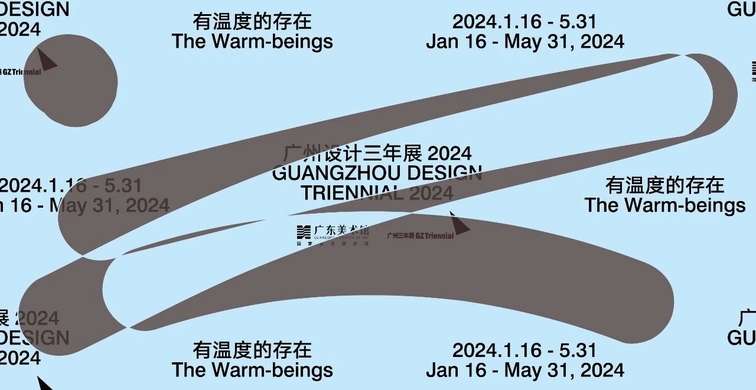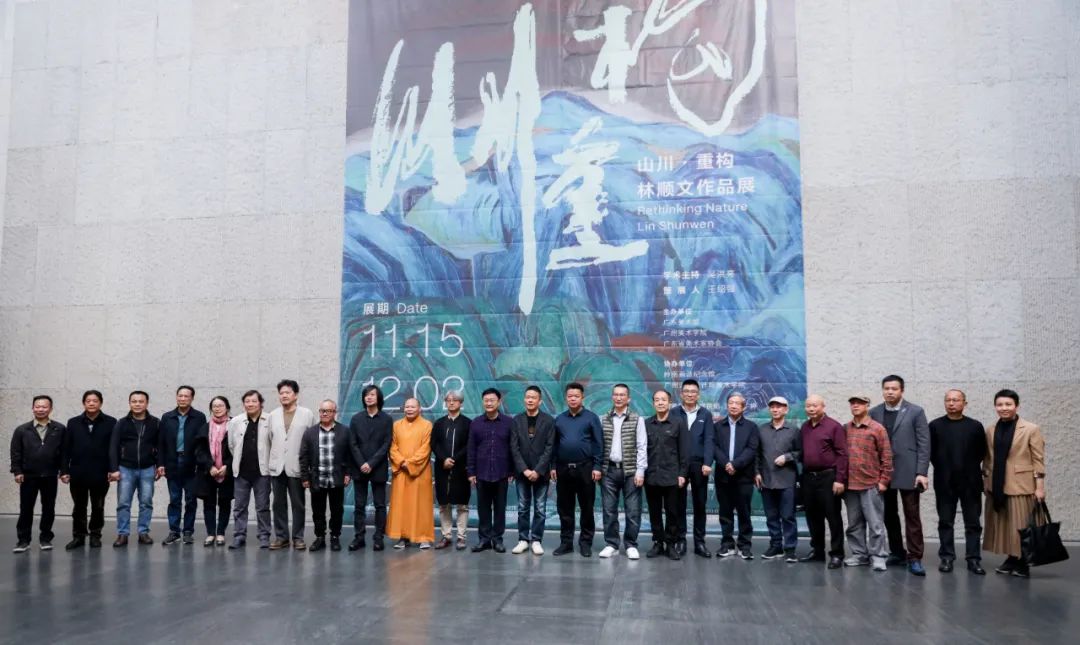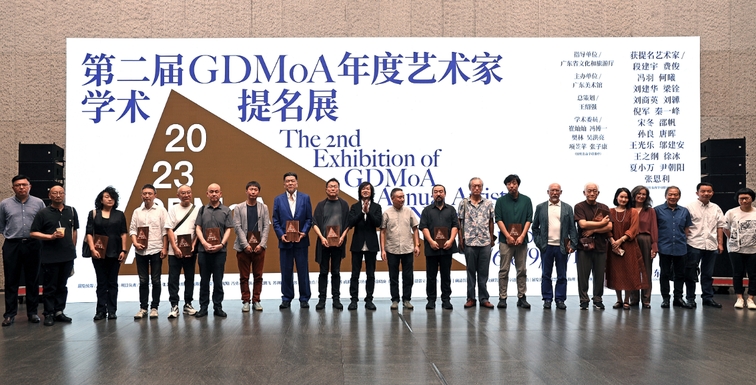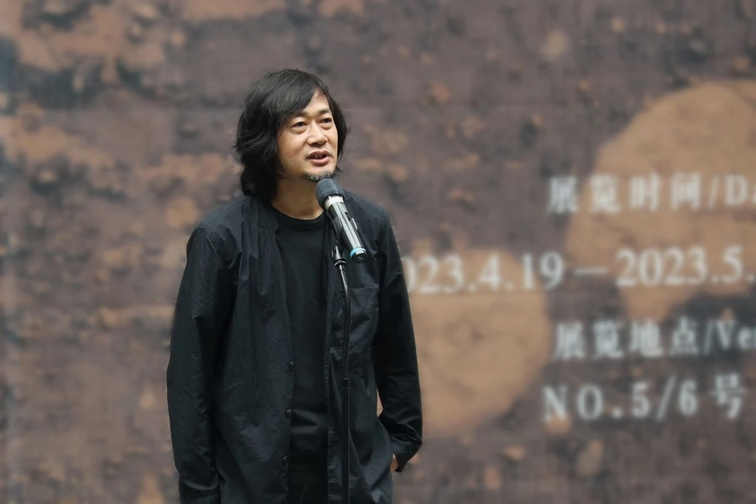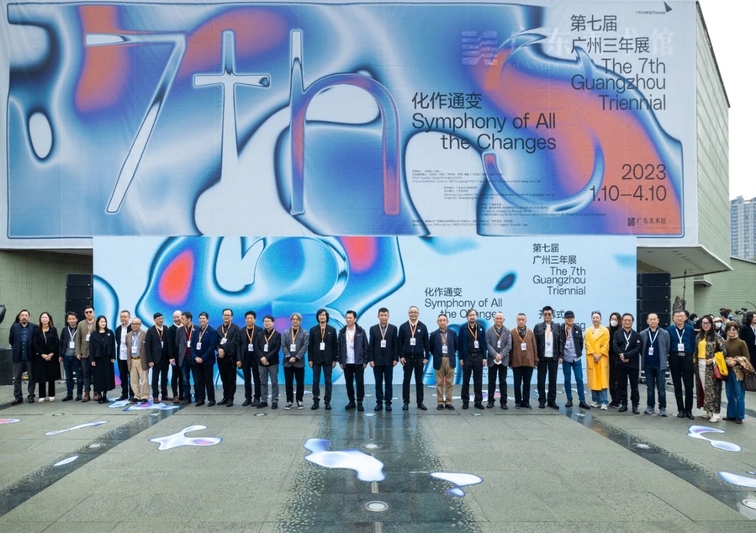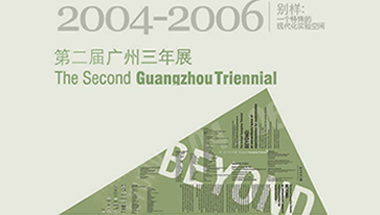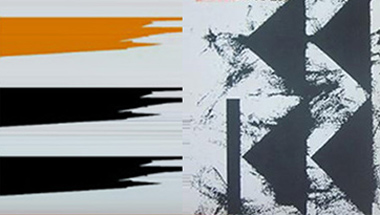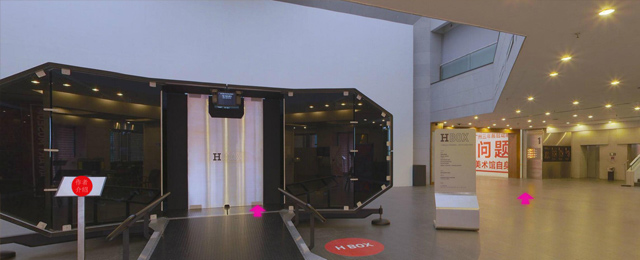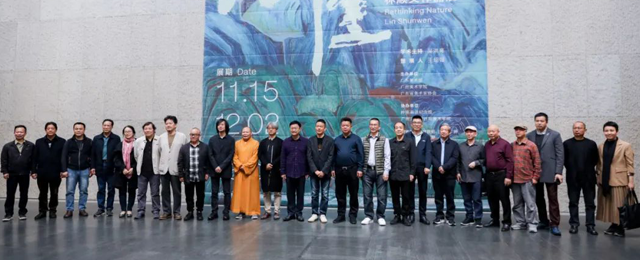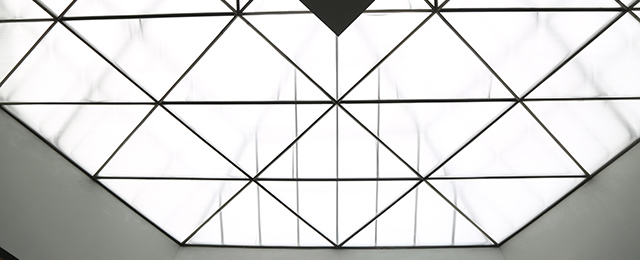British art treasures on display in Guangzhou《Shenzhen Daily》
录入时间: 2013-06-18
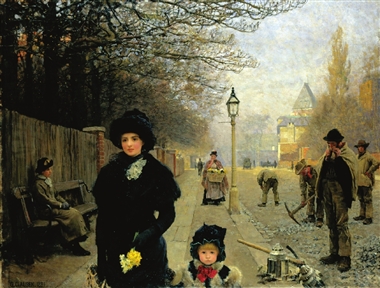
Oil painting “Spring Morning: Haverstock Hill” by George Clausen. Photos by courtesy of the Guangdong Museum of Art
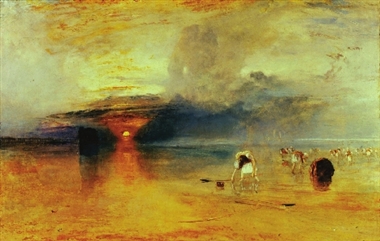
Joseph Mallord William Turner’s oil painting “Calais Sands at Low Water: Poissards Collecting Bait.”
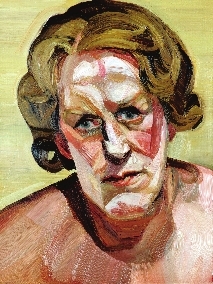
Oil painting “Woman’s Head With Yellow Background” by Lucian Freud.
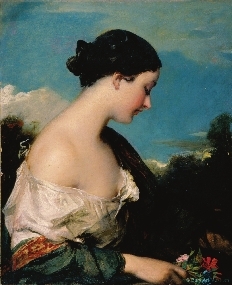
James Sant’s oil painting “Contemplation.”
Wang Haiying
A COLLECTION of 80 artworks that illustrate British art history from the 18th to 21st centuries is on display at the Guangdong Museum of Art until June 14.
Titled “Towards Modernity: Three Centuries of British Art from Public Collections in Northwest England,” the exhibition presents works selected from 18 museums and galleries in Manchester and neighboring cities in the United Kingdom. Including oil paintings, prints, watercolors, drawings and sculptures, the exhibition covers a wide range of subjects and styles by 78 outstanding British artists, including world-famous masters such as Joseph Mallord William Turner, John Constable, Henri Moore, William Hogarth, Dante Gabriel Rossetti and Lucian Freud.
The exhibition demonstrates British art’s evolution from classicism to modernism.
British style established
Portraits and genre painting began to flourish in the United Kingdom in the first half of the 18th century. Hogarth, regarded as the first world-famous British painter, joined with other preeminent painters such as Joshua Reynolds to lay a profound basis for the future development of British painting.
The extreme beauty of the land led to the success of British landscape painting in the 19th century. Turner and Constable especially are recognized as pioneers of impressionism. With strong love of nature, they were the earliest artists to paint outdoors instead of in studios, discovering the real beauty and richness of nature. Emitting extreme serenity with vivid colors, Constable’s works looked so different from traditional “ideal landscape paintings” that many French painters were much enlightened by him.
Turner, in contrast, preferred to depict spectacular and dramatic seascapes in mists and storms, so his oil paintings and watercolors seem quite abstract with innovative uses of colors that greatly inspired French impressionists and upcoming modern artists. Depicting a brilliant sunset at sea, his masterpiece “Calais Sands at Low Water” — part of the Guangdong exhibition — is one of the great treasures of Manchester collections.
Romanticism and
Pre-Raphaelites
Under the influence of romanticism, the Pre-Raphaelite artists of the 19th century — such as Rossetti — discovered the natural and unadorned quality of works before Raphael. Beauty came out naturally in works by the Pre-Raphaelites when they sincerely expressed deep emotions.
Artists during the Impressionist period became interested in portraying realistic scenes of everyday life, rather than narrating legends or stories.
“The Spring Morning: Haverstock Hill” by George Clausen is an extraordinary example of British impressionism that shows a glimpse of a London street scene with realistic outdoor light and colors. With a kind of poetic and serene atmosphere, it mysteriously conveys infinite inner fascination.
At the same time, artists in the second half of the 19th century gradually became more concerned with the beauty of forms, such as colors, lines and compositions. Obtaining inspirations for forms from Oriental art — such as paintings on Chinese porcelain — James Whistler was a key step in British painting’s turn toward modernity. He devoted much effort to achieving harmony in forms, while bringing out intense affections at the same time. “The Goldfish Pool” by Burne-Jones, also in the Guangdong exhibition, shows how British painting shifted from story narration to the pursuit of compositional forms.
Masters of modern art
At the beginning of the 20th century, modernism began sweeping from Europe to all over the world. All kinds of avant-garde styles — expressionism, abstractionism, surrealism and more — appeared one after another. Cherishing the unique excellence of their traditions, British artists seldom go to extremes in seeking “revolutionary” new forms. Their intrinsic artistic languages manifest the true spirit of modernism. Like many of the great modern masters from Britain, Freud and Moore never gave up the essence of tradition. Though almost abstract in form, Moore’s sculptures suggest the vitality of human beings.
“With a profound tradition of culture, distinctive and enduring charm always was found in British art in the past, especially in the changeable 20th century,” observed Dr. Luo Yiping, director of the Guangdong Museum of Art.
The key point is to look at the originals with a fresh mind and eyes. As the world-famous English art historian E. H. Gombrich said, “Great works of art seem to look different every time one stands before them.”
(The writer is an art researcher with the Guangdong Museum of Art)
Time: 9 a.m.-5 p.m., Tuesday-Sunday
Date: April 28-June 14
Venue: Guangdong Museum of Art,
38 Yanyu Road, Ersha Island, Guangzhou
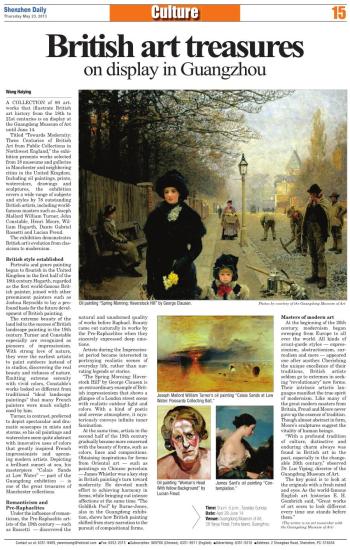
开放时间:每周二至周日9:00-17:00(逢周一闭馆)
每日16:30停止入场
地址:广东省广州市越秀区二沙岛烟雨路38号
咨询电话:020-87351468
预约观展:
-
冬日的寒凉抵不过大家的热情。 广东美术馆的这个冬天, 因为观众朋友...

